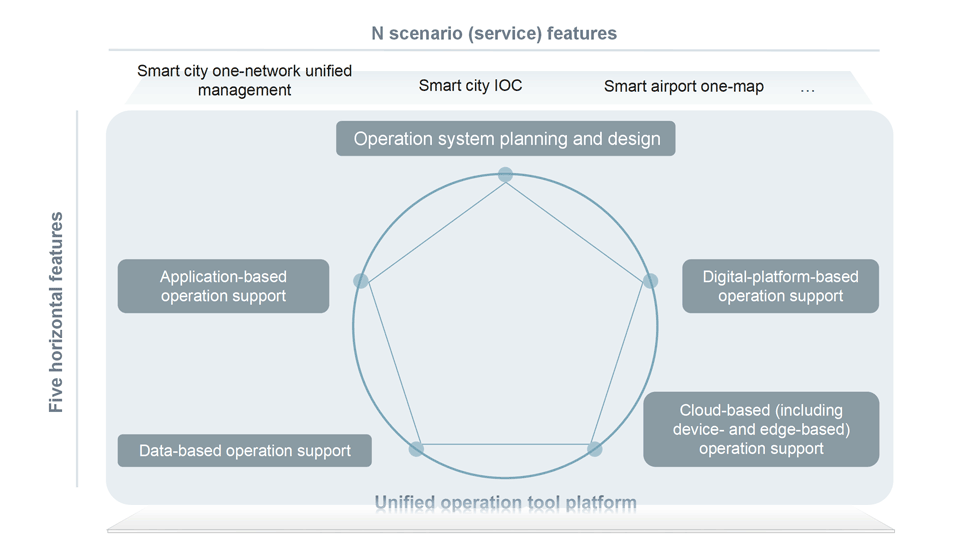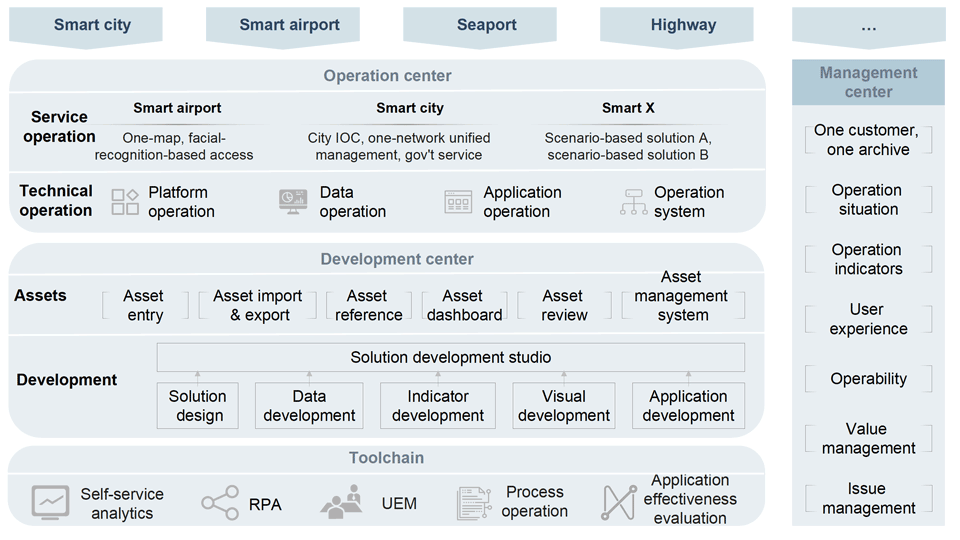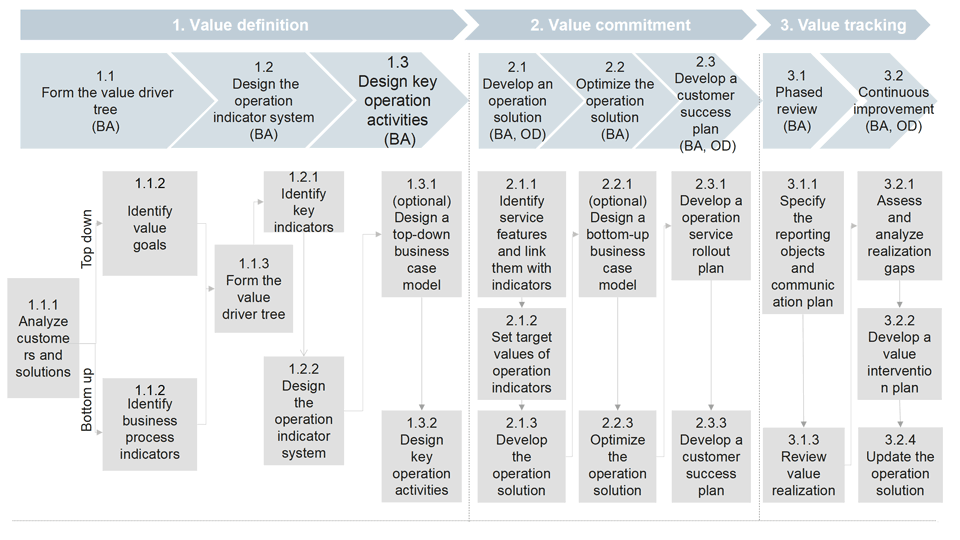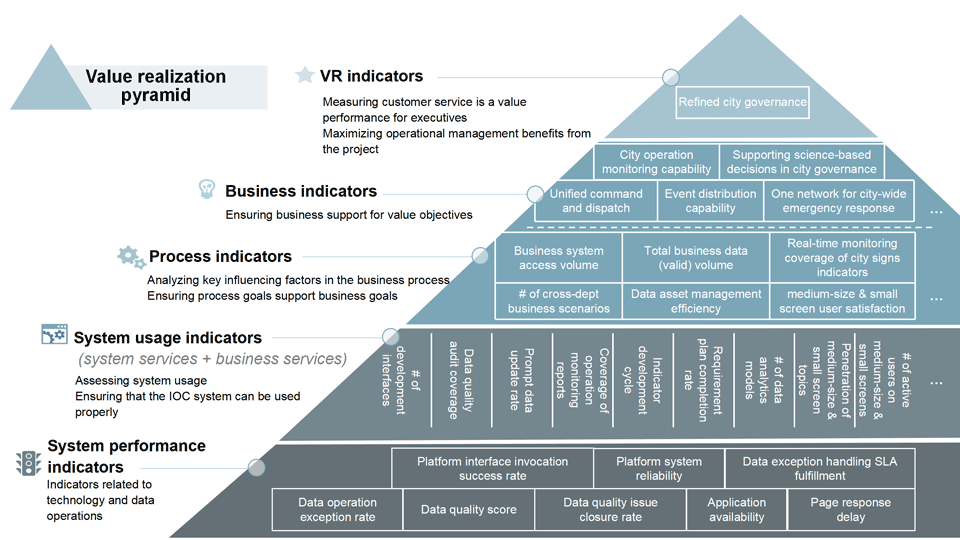New Solutions
Why Operation Support Service Is Key for Enterprise Digital Transformation
With the digital transformation of industries entering its most challenging phase, operations services are becoming increasingly important for industry digitalization. Huawei has made its capabilities in this area platform-based and worked with industry experts to drive digital transformation.


By Guo Zhiqiang, Senior Expert, Huawei Industry Service Solutions
As the digitalization of industries deepens into a phase where deployment and operations are equally important, the needs of government and enterprise customers go beyond basic services that achieve stable O&M. They are now focusing on operations services that facilitate agile and forward-looking services.
Customers are typically concerned about ROI, the value solutions provide, unlocking the potential of data assets, and giving full play to digital technologies. Smart cities, for example, require a long-term development model for operations that enables citizens, enterprises, and city managers to use smart city systems that enable businesses to thrive and improve quality of life for people. City managers need to understand how to turn data into a value system. To achieve that, Huawei offers industrial operation support service to government and enterprise customers, providing multi-dimensional management and operation support service.
Industrial operation support service
Huawei services for industrial operation support service must build service capabilities and create value for government and enterprise customers in at least four areas: 1. Improve IT operations efficiency, optimize how digital technologies are used, and maximize ROI. 2. Use refined data-based management and science-based decision-making to support service operations. 3. Identify and analyze problems in operations, develop iterations, and optimize digitalization. 4. Track the value digital transformation projects create and ensure that objectives are attained.
The 1+5+N service framework
As different industries require different solutions, how can a balance between common needs and industry-specific needs be reached?
Solutions for different industries have similar architecture components, like device-edge-cloud, digital platforms, data, applications, and upper-layer service scenario solutions. Identifying and integrating these common service features into a unified offering can underpin the development of scenario-specific solutions for different industries.
In response, Huawei designed the 1+5+N operation support service framework as a reference architecture (see Figure 1).

Figure 1: 1+5+N operation support service framework
1: One reference architecture
Industry-specific solutions consist of common horizontal features and scenario-specific features, covering both baseline and project-specific solutions under a unified reference architecture.
5: Five horizontal features
Operations system planning and design: creates value for customers through a systematic framework during the planning and design phase for business, service, and technology operation systems.
Application-based operation support service: overcomes business challenges, such as utilizing applications, improving user satisfaction, developing iterations, and optimizing operations. These features provide customers with a good experience that unlocks the value of their digital solutions.
Data-based operation support service: ensures data quality, reliability, and availability to realize the value of data from operations and enable data-driven customer services.
Digital platform-based operation support service: uses capabilities such as AI, IoT, and ICP to ensure that technical services on the digital platform run properly. This feature enables service innovations and applications based on digital technologies, which in turn increases customer loyalty.
Cloud-based (including device- and edge-based) operation support service: ensures the efficient and stable operation of resources through the operation of devices, edge, cloud, and connectivity equipment, maximizing resource efficiency.
N: A range of scenario-based operation support service solutions for industries
Solutions are provided for specific scenarios. For a smart city project, for example, one-network solutions can be tailored for city governance and government services scenarios. For smart airports, a facial recognition solution for access can be used for passengers, while a one-map solution can be deployed airport operations control.
Auxiliary tools provide operation support service. The unified operations tool platform is a collection of Huawei best practices for digital operations that integrates the development center, operations center, management center, and operations toolchain. The platform provides tool-based capabilities for operations services for digital platforms, data, and application. It also agilely supports digital service operations and solutions development.

Figure 2: Overview of the unified operation tool platform
Value-management methodology
Digital transformation is the evolution from value creation to value realization, which runs throughout the digital service process from consulting and integration to operation support service.

Figure 3: Value flow: consulting-integration-operation support
Value is the North Star Metric for operation support services. In government and enterprise digital transformation projects, both consulting and integrated delivery belong in the value creation phase, whereas operation support service is under the value realization phase. Based on these categorizations and Accenture's three-stage value theory (definition, commitment, and tracking), Huawei has developed a value management methodology for operation support service. The methodology helps customers design service solutions based on their value-creation goals, explore opportunities that arise in business, and guide operation support service projects.

Figure 4: Methodology and key steps of value-based operation support solution design and implementation
A value definition method is used based on solutions and value baselines to identify customer-side stakeholders, define the value driver tree, and establish the operations indicator system. This stage involves three steps: forming the value driver tree, designing the operation indicator system, and designing the key operation activities.

Figure 5: Operation indicator system design (example: city IOC): Value realization pyramid for identifying key indicators
In the value commitment stage, the value commitment method is used to identify service features, with the goal of developing the corresponding operations solution and customer success plan. This stage involves three steps: developing the operations solution, optimizing the operations solution, and releasing the customer success plan. During delivery projects, the development of the operations solution and customer success plan can be combined into the operations implementation solution, which includes operations scope, goals and strategies, the service solution, indicators and customer success plan, organization, responsibility matrix, and project implementation plan.
During the value tracking stage, the value tracking method is used to specify the operations communication and reporting mechanism, track and monitor value results, evaluate and analyze gaps, develop the value intervention plan, and optimize operations services, so as to ensure the target value indicators are attained.
The value-management-based operation support service method system has already been piloted in smart city and smart airport projects.
Operation support service helps realize the value of industry digital transformation
Huawei's operation support service focus on customer service scenarios. They provide one-stop services through operations planning and design; operation support service for applications, data, and digital platforms; and an operations tool platform.
For an integrated IOC project in Shenzhen, the customer encountered challenges in effectively using the IOC. Based on the IOC operation support service solution, the operations team ensured the basic elements of services, such as the service hall and data foundation, supported survey visits and ensured that every piece of data was clean and usable. The team closely followed the customer's business needs, including routine IOC operations and mobile device operations provided for emergencies and specific application scenarios. The team also developed systematic management mechanisms and a visualized data architecture, unlocking the value of the city IOC.
Services that support government SDTs are developed for customers that require urban governance service scenarios. In a Shanghai project, the operations team used the one-network unified management solution to help the customer review issues, processes, and indicators relating to city governance in the IOC, explore application scenarios through data analytics, and train specialized operations personnel in integrating technologies and services. In Suzhou, the operations team used the major event assurance solution and AI algorithms to monitor visitor flow in real time and assist executive decision-making, successfully supporting the Jinji Lake Music Fountain event during National Day holiday.
Ecosystem aggregation for a shared future
To encourage more industries to prioritize operation support service during digital transformation and enhance smart city operation services, Huawei has participated in developing industry standards and white papers. In 2021, the Smart City Industry Ecosystem (SCIE) collaborated with 11 industrial, academic, and research organizations, including Huawei, to develop the Smart City Operation Support Service White Paper. This white paper details the connotations, denotations, and multi-dimensional architecture of the Smart City Operation Support Service. In 2022, the Smart City Standards Working Group of the National Information Technology Standardization Committee established a specialized operation team, with Huawei as team leader, to research, develop, implement, and promote national standards relating to the smart city operations service and management platform.
With the value of operations service increasing, operation support service is becoming increasingly important. Forging additional partnerships is the key to opening up Huawei’s operation support service capabilities and platforms to support industry customers with successful digital transformation.





